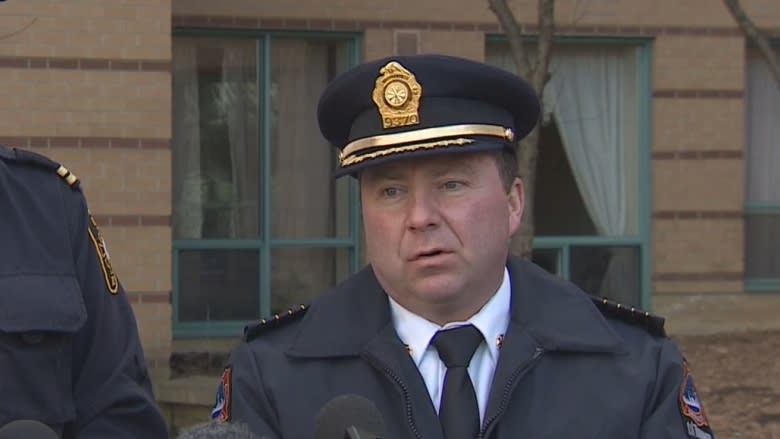TCH buildings have 'unique challenges' as 4 fires in past 6 weeks being probed
Toronto Fire Services says it is investigating four fires at Toronto Community Housing apartment buildings in the past six weeks.
One of the fires led to a fatality. Three led to injuries. Two involved improper disposal of cigarettes. One was likely caused by a candle. One involved hoarding issues.
Deputy Chief Jim Jessop of Toronto Fire Services said the investigations will help the fire department determine which buildings need more frequent inspections, which buildings should be inspected first, and what kind of messages should be given to the public about fire prevention.
The properties are all owned and operated by TCH.
"We don't believe they are linked in any way. We don't believe there is any sort of systemic problem. I certainly don't want to suggest that this is a special investigation," Jessop said Wednesday.
"Given our density, given the vertical city, given our intensification, Toronto Fire takes these fires very seriously because we've seen what happens in multi-unit residential buildings when fires occur."
The investigations are into fires at:
- 275 Shuter St. on Feb. 8, a high-rise west of Parliament Street; no one was injured, the cause was improper disposal of cigarettes and there were hoarding issues in the unit.
- 291 George St. on Feb. 9, a high-rise north of Dundas Street East; a man died, a handful of others were injured, and the cause was improper disposal of cigarettes.
- 310 Dundas St. E. on Feb. 20, a high-rise east of Sherbourne Street; a woman was injured and hospitalized, the cause is suspected to be a candle.
- 7 Arleta Ave. early Wednesday, at 12:40 a.m., a low-rise near Sheppard Avenue West; a person was injured and fire is still under investigation.
The last two are also being investigated by the Office of the Fire Marshal. None have been deemed criminal. The fire investigation section of Toronto Fire Services is conducting the investigations.
Jessop said there were probably about 20 additional fires that were investigated in the same time period.
"Anytime we have a civilian hurt, or we have a fire in a multi-unit residential building, our investigators show up, and in certain thresholds, will work with the Office of the Fire Marshal to determine the origin, cause and circumstances of the fire to see if there is data that we can learn from that we can embed into our fire inspection and public education programs to help to prevent and mitigate future fires," Jessop said.
Toronto Fire Services is not singling out TCH buildings. But Jessop said TCH, as the largest landlord in Canada, has its own problems especially considering some of its residents are vulnerable people, he said.
"It's no secret that they have unique challenges that they face on a daily basis," he said.
He said TCH works collaboratively with the fire department to correct problems.
The fire department aims to inspect 3,500 high-rise buildings involving multiple units Toronto every year. Investigators look at trends and causes to "adjust our strategies," he said.
The fire department, under Ontario's Fire Protection and Prevention Act, is required to investigate fires.




